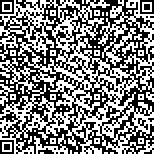| 摘要: |
| 近期,笔者参与翻译了德国米歇
尔·特瑞普(Michael Trieb)教授的著作《城
市设计——理论和实践》。德国的城市扩张
在2 0 世纪70年代逐步乏力,城市更新与历
史城市品质的提升日益受到重视。在此背景
下,城市设计学派的价值开始逐步被城市学
界与实践领域认知。在这一时期,美国涌现
出了凯文·林奇(Kevin Lynch)、克里斯托
弗·亚历山大(Christopher Alexander)等重
要城市设计先锋学者。而在欧洲同期,城市
设计理论也得到了快速发展,代表者之一的
米歇尔·特瑞普(Michael Trieb)的著作《城
市设计——理论和实践》(Urban Planning:
Theory and Practice),及其之后历史城市
更新导则的系列设计工作,均发源于这一趋
势。米歇尔·特瑞普(Michael Trieb)在人本
主义和重视心理体验这一认识论视角下,联
系了心理学研究和城市设计,发展出了相应
的城市设计理论体系,强调城市环境的个体
性、生动性、整体性和多样性等心理品质,
并形成了多种规范城市建筑设计、空间形态、
城市天际线等要素的实践手段。 |
| 关键词: 城市设计 体验环境 城市形态 城市体验 城市意象 风貌导则 |
| DOI:10.13791/j.cnki.hsfwest.20150507 |
| 分类号: |
| 基金项目: |
|
| Urban Design: Emerging Values in the Urban Planning Transition of Europe in the 1980s—Urban Planning: Theory and Practice by Professor Michael Trieb |
|
ZHANG Yajin,WANG Qian
|
| Abstract: |
| Recently, the author has been involved in the translation of the book Urban Design:
Theory and Practice by Professor Michael Trieb. In 1970s, the urban sprawl has slowed
down in Germany. The urban renewal and qualities of historical cities have attracted public
attention. In this context, the value of urban design school has been gradually cognized by
the urban design academy and practice field. Famous urban design pioneer scholars appear
in America such as Kevin Lynch and Christopher Alexander; in the same period, the urban
design theory has also been rapidly developed in Europe, one of the representatives—Michael
Trieb—with his book Urban Design: Theory and Practice and other series of design works
following urban renewal guidelines are originated from this trend. Under the perceptual view
of humanism and psychological experience, Mr. Trieb has combined the psychological research
with urban design and developed a corresponding system of urban design theory, emphasizing
the psychological qualities of urban environment such as individuality, vitality, integrity and
diversity, forming standardized practice methods, such as architectural design, spatial pattern,
city skyline and other elements. |
| Key words: Urban Design Environment Experience City Form City Experience City Image Design Guideline |


